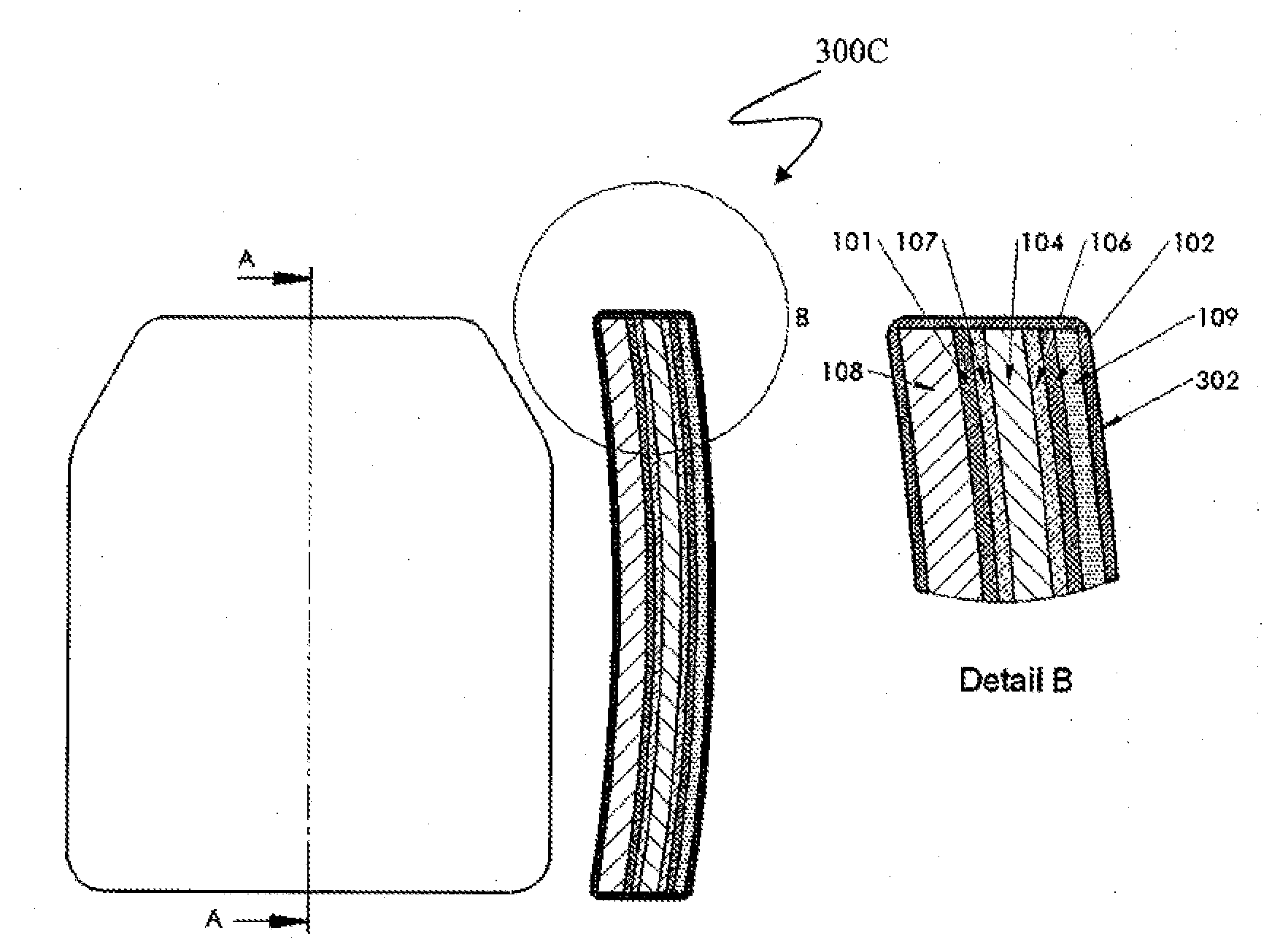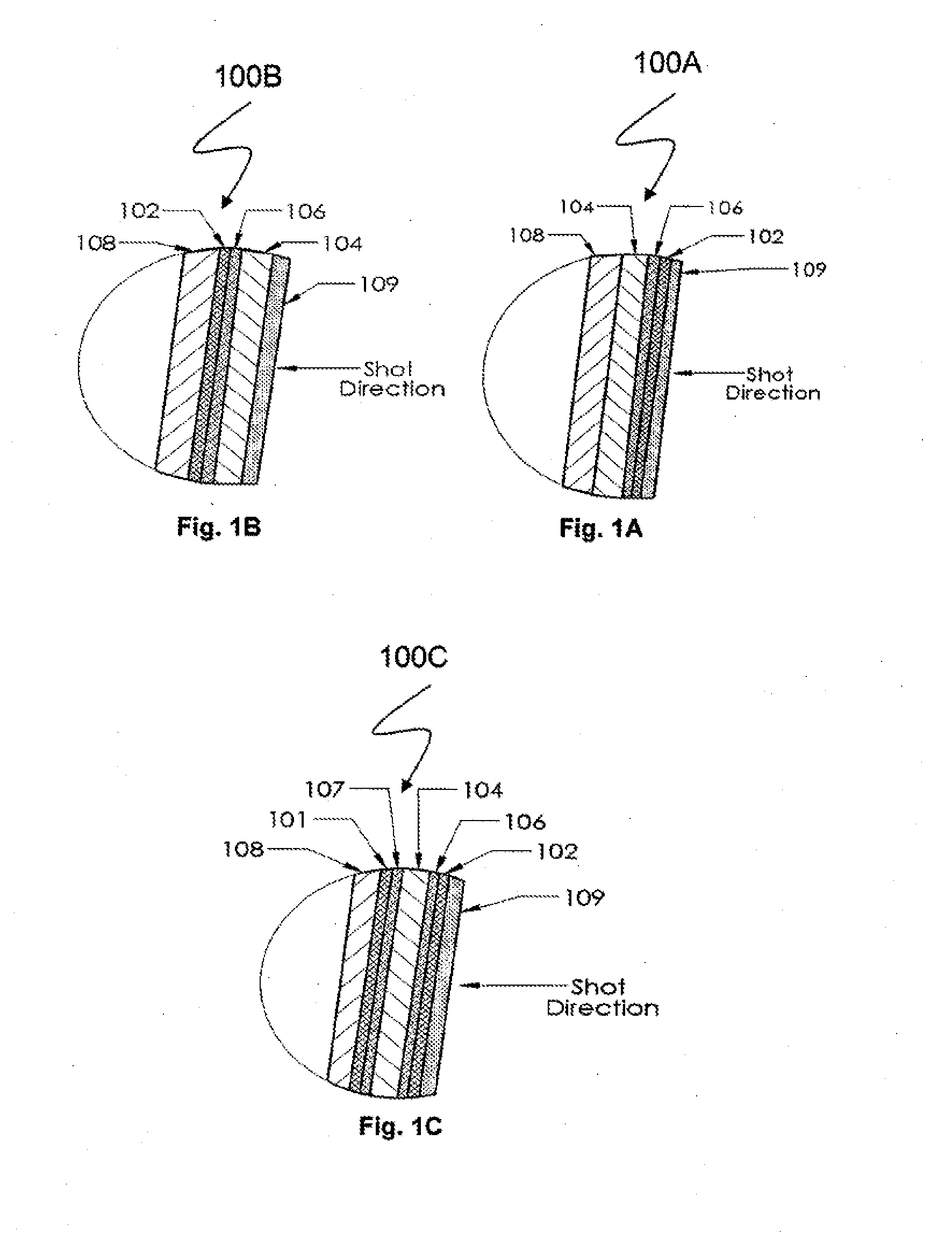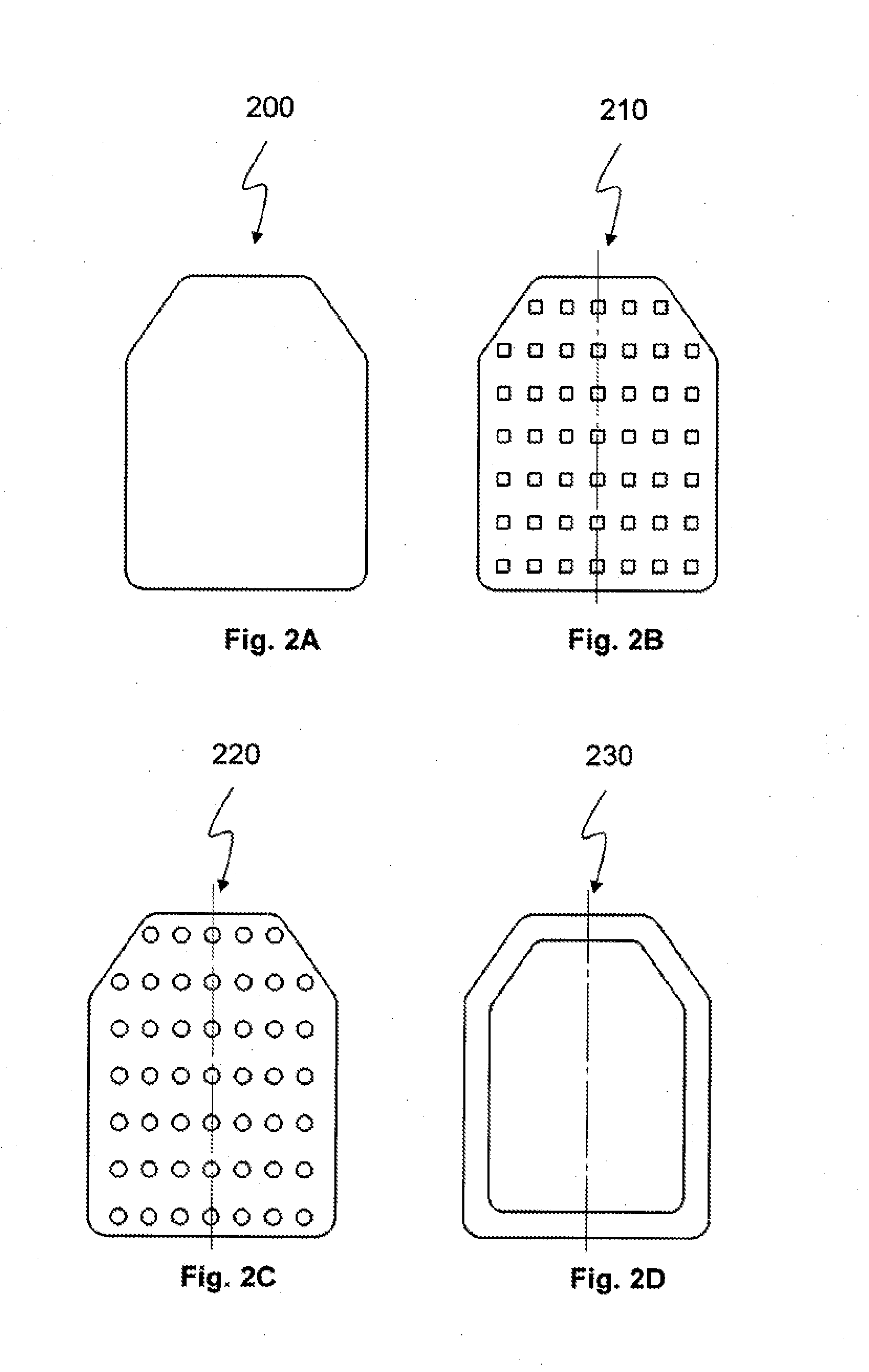Antiballistic article and method of producing same
a technology of anti-ballistic articles and anti-splash, which is applied in the field of ceramic armor, can solve the problems of inability to achieve monolithic inserts, high production costs of inserts, and complex pre-stressing phenomena, and achieve the effects of reducing the total weight of anti-ballistic articles, reducing the spall and debris ejection angle, and increasing the multi-hit capability of anti-ballistic articles
- Summary
- Abstract
- Description
- Claims
- Application Information
AI Technical Summary
Benefits of technology
Problems solved by technology
Method used
Image
Examples
example
[0074]In order to stop a 30-06 APM2 bullet 868-884 m / sec at a personal ballistic plate with a backup of NIJ LEVEL IIIA vest we used an article comprising an 8.5 mm thick SiC ceramic plate with 9 mm of UHMWPE backing material all encapsulated in aramid fabric and pressed isostaticly in an autoclave for a total areal weight of 37.7 kg / m2. Alternatively, one can use an article comprising 0.5 mm thick aluminum sheet type AL7075-T6 bonded onto the front face of an 8.0 mm thick SiC ceramic plate with Hysol® EA9628 epoxy at 140° C. and then cooled down to room temperature. The article may further comprise a 6.5 mm thick UHMWPE backing material where all the layers are encapsulated in aramid fabric with epoxy resin and pressed isostaticly in an autoclave for a total areal weight 35.1 kg / m2.
[0075]The resulting articles have the following characteristics: (a) total weight reduction of 7-15%; (b) multi-hit capability increases from 2 bullets per plate to 3 bullets per plate; (c) 10% raw materi...
PUM
| Property | Measurement | Unit |
|---|---|---|
| temperature | aaaaa | aaaaa |
| temperature | aaaaa | aaaaa |
| thickness | aaaaa | aaaaa |
Abstract
Description
Claims
Application Information
 Login to View More
Login to View More - R&D
- Intellectual Property
- Life Sciences
- Materials
- Tech Scout
- Unparalleled Data Quality
- Higher Quality Content
- 60% Fewer Hallucinations
Browse by: Latest US Patents, China's latest patents, Technical Efficacy Thesaurus, Application Domain, Technology Topic, Popular Technical Reports.
© 2025 PatSnap. All rights reserved.Legal|Privacy policy|Modern Slavery Act Transparency Statement|Sitemap|About US| Contact US: help@patsnap.com



